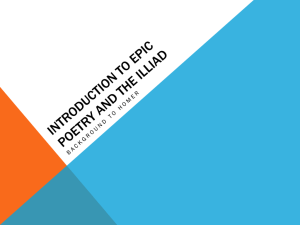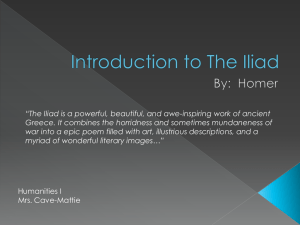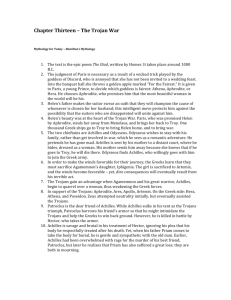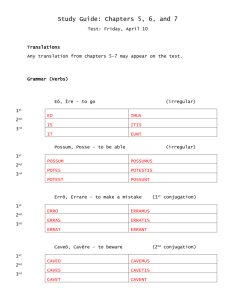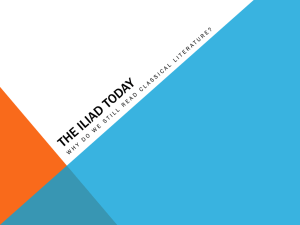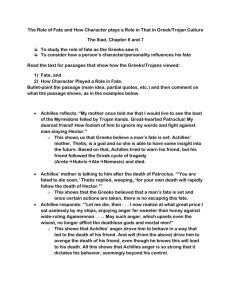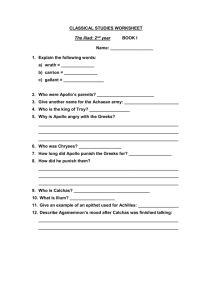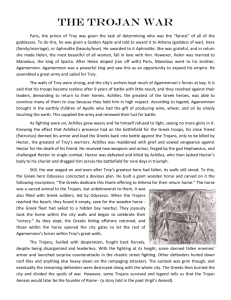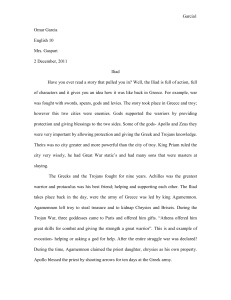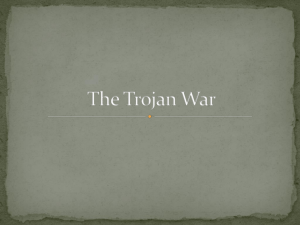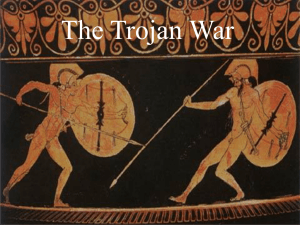Introduction to The Iliad
advertisement
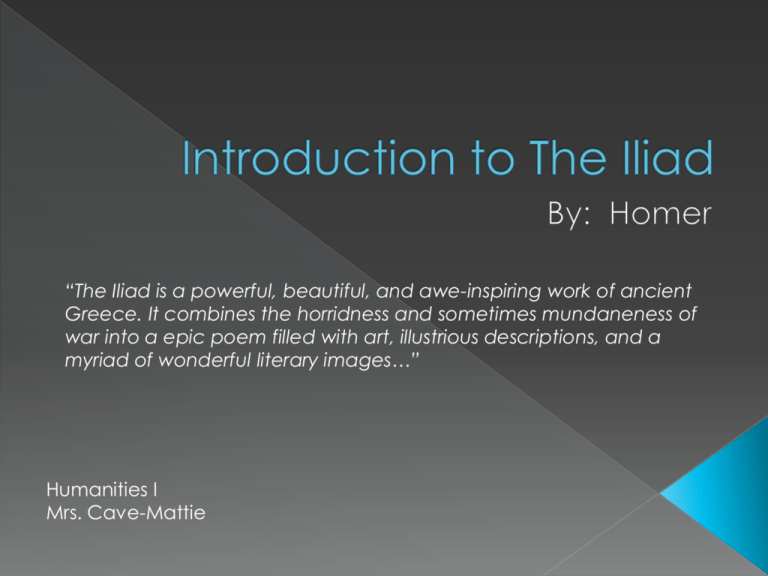
“The Iliad is a powerful, beautiful, and awe-inspiring work of ancient Greece. It combines the horridness and sometimes mundaneness of war into a epic poem filled with art, illustrious descriptions, and a myriad of wonderful literary images…” Humanities I Mrs. Cave-Mattie Note that a circumflex (^) indicates a long vowel sound (Leto, which will have the circumflex over the e is pronounced LAY-toe) An accent mark (`) indicates stress. (Menelaos, with the accent mark over the a, is pronounced men-a-LAY-os) Terms that apply to Greeks: (and there are many different spellings that you will see) › › › Achaeans Danaans Argives › Dardanians › Ex. Kalkhas Thestorides means Kalkhas, son of Thestor Terms that apply to the Trojans: The suffix –ides means “son of”. If you look online for any information on The Iliad, you will likely find SEVERAL different spellings for ALL characters. This is due to the many different translations of the epic. The same god or man may be referred to by many different names within the same translation. It focuses on a few days toward the end of the ten year Trojan War between the Greeks and the Trojans. It is the story of the anger of the Greek hero Achilles, who, insulted by his commander-in-chief, Agamemnon, withdraws from the war, leaving his fellow Greeks to suffer terrible defeats at the hands of the Trojans. Achilles rejects the attempts by the Greeks to reconcile, and instead, he allows his companion, Patroclus, to lead his troops in his place. Patroclus is slain, and Achilles eventually turns his anger against the Trojans. Literary critics argue that the story is completely centered around the “rage of Achilles”, rather than the Trojan War itself. It is often referred to as the ancient Saving Private Ryan tale, which tells us the raw details of war, leaving nothing to the imagination. Achilles, an amazing man, warrior, and hero, who shows that true friends defend each other until the end. Although the focus of the tale is on the character Achilles, the harsh depiction of war is also quite evident. The fighting that takes place is often described without any regard to filtering violence: › "He brought him down with a glinting jagged rock, massive, top of the heap behind the rampart's edge, no easy lift for a fighter even in prime strength, working with both hands, weak as men are now. Giant Ajax hoisted it high and hurled it down, crushed the rim of the fighter's four-horned helmet and cracked his skull to splinters, bloody pulp..." Many suggest that if the story were set in today’s society, it would be in an inner city location. The two opposing gangs, The Greeks and The Trojans, would make every attempt to lay to waste each other’s cities and livelihood. "But the will of Zeus will always overpower the will of men." Another key element is the extraordinary role of the polytheistic beliefs of the Trojans and Achaeans. Many actions are taken or acted upon as a result of "theistic" beliefs and supposed "divine intervention". Different "gods" were interpreted as being for different armies › Apollo for the Trojans › Athena for the Achaeans Most of the people that are in the story all seem to believe that most or all of their actions are already predetermined or in the control of the "gods". Homer continues to stress the ability of the gods to control mortal lives, actions, and consequences.
